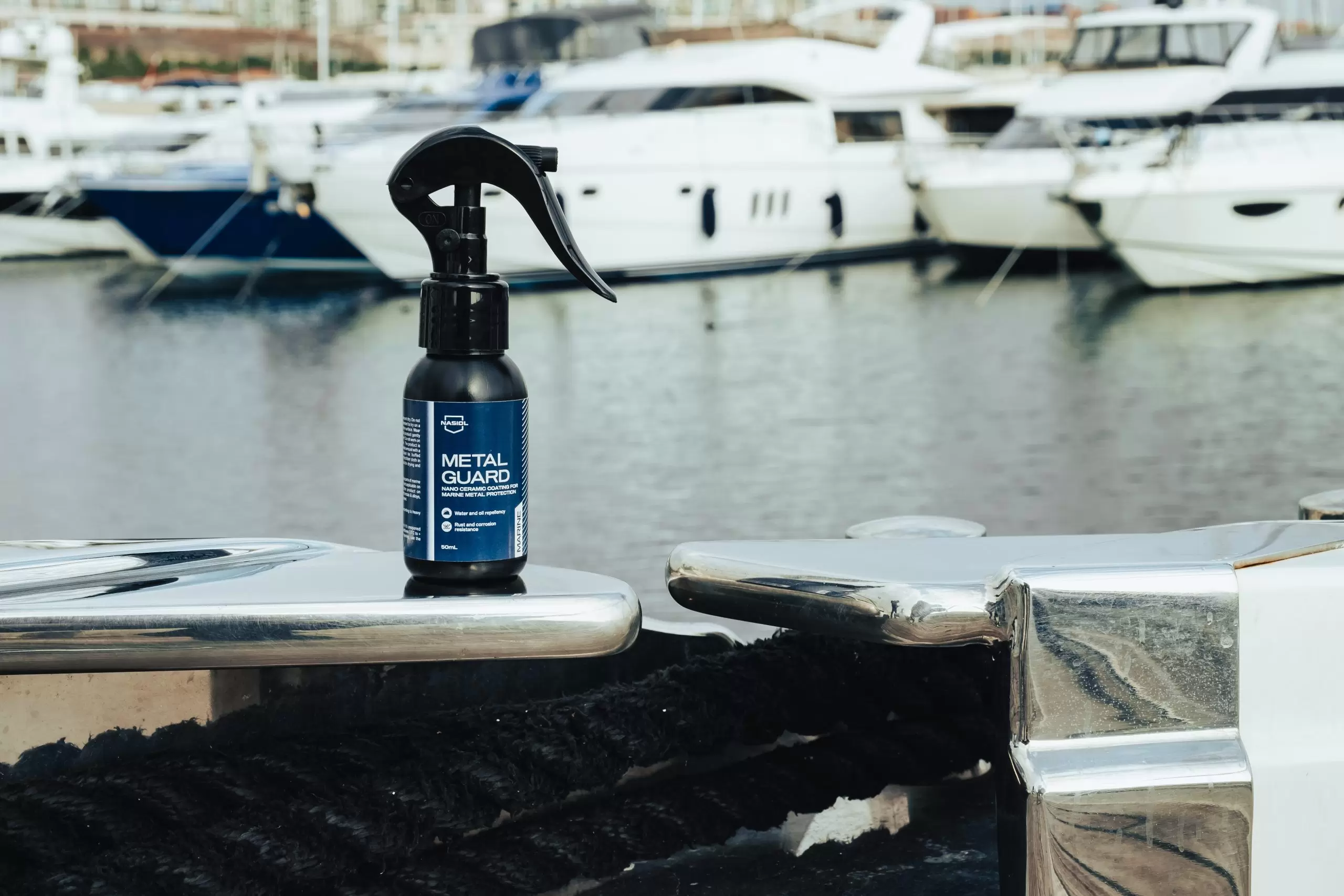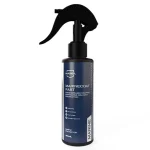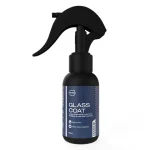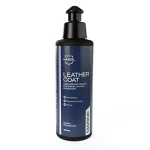Marine vessels, from luxurious yachts to sturdy fishing boats, face relentless exposure to the harsh marine environment. Saltwater, UV rays, and the constant threat of physical damage can degrade their surfaces over time. To maintain their aesthetic appeal and structural integrity, these vessels are often coated with gelcoat, a protective and decorative layer. Gelcoat not only provides a gleaming, sparkling finish but also offers a smooth, eye-catching texture. However, preserving this glossy surface requires diligent care and protection. This is where ceramic coatings come into play.
Ceramic coatings act as an invisible shield, safeguarding the gelcoat from dings, spots, and other environmental hazards. These coatings enhance the durability of the gelcoat, ensuring that marine vessels retain their pristine appearance even under the harshest conditions. The sea and its surroundings pose numerous threats to the longevity and aesthetics of boats and yachts, making it a matter of concern for owners who invest heavily in their vessels.
Thus, to assist you, we will discuss using ceramic coating on a boat and how long marine coating lasts.

Why do you Need a Ceramic Coating for your Marines and Boats?
Ceramic coatings are the most dependable and effective solution for maintaining cars, boats, and yachts. Marines and boats need to be protected from harmful UV rays and corrosion. Boat equipment is affected by the seaside elements; in this connection, ceramic coatings for marines work as armor against all these impurities.
How Does the Ceramic Coating Work on Marines?
Ceramic coating on marine vessels operates by creating a strong, durable protective layer that shields the surface from various environmental and physical damage. Here’s a detailed breakdown of how it works:
- Surface Preparation
Cleaning: The surface of the boat or yacht must be thoroughly cleaned to remove any dirt, grime, salt deposits, and other contaminants. This ensures proper adhesion of the ceramic coating.
Polishing: Any imperfections, such as scratches or oxidation, are polished out to create a smooth, flawless surface.
- Application
Coating: The ceramic coating is applied to the clean and polished surface using an applicator pad or a spray. It is spread evenly to form a thin, uniform layer.
Curing: The coating needs time to cure and bond with the surface at the molecular level. This process can take several hours to a few days, depending on the specific product and environmental conditions.
- Chemical Bonding
Molecular Bonding: The ceramic coating forms a chemical bond with the surface, creating a strong, resilient layer. This bond is much stronger than traditional wax or sealants.
Durability: The resulting layer is highly resistant to environmental factors such as UV rays, saltwater, and chemicals, providing long-lasting protection.
- Hydrophobic and Oleophobic Properties
Water Repellence: The coating exhibits hydrophobic properties, causing water to bead up and roll off the surface. This helps prevent water spots and reduces the accumulation of salt and grime.
Oil Repellence: The oleophobic nature of the coating repels oils and other contaminants, making the surface easier to clean and maintain.
- Protection and Enhancement
UV Protection: The ceramic coating protects the gelcoat and paint from UV damage, preventing fading and oxidation.
Scratch Resistance: The hard, durable layer provides a measure of resistance against minor scratches and abrasions.
Enhanced Appearance: The coating enhances the shine and gloss of the gelcoat, giving the vessel a sleek, polished appearance.
- Maintenance
Easy Cleaning: The smooth, non-stick surface makes it easier to clean the boat or yacht, reducing the need for harsh chemicals and labor-intensive scrubbing.
Longevity: With proper maintenance, ceramic coatings can last for several years, providing long-term protection and reducing the frequency of reapplication.

Marine Glass Protection – Ultimate Protective Shield
Marine glass protection is essential for maintaining the clarity, durability, and functionality of glass surfaces on marine vessels. The ultimate protective shield for marine glass typically involves advanced coatings that provide superior protection against the harsh marine environment. Nasiol GlassCoat Marine is a specialized ceramic coating designed to protect glass surfaces on marine vessels. It offers a range of benefits tailored to the harsh conditions encountered at sea.
GlassCoat Marine- How does it work?
It works by forming a strong, transparent layer of protection on glass surfaces. When applied, the coating bonds at the molecular level, creating a hydrophobic and oleophobic barrier. This barrier repels water, oils, and other contaminants, significantly reducing the amount of dirt and grime that adheres to the surface.
Overall, GlassCoat Marine provides a superior level of protection for glass surfaces, enhancing their longevity and reducing maintenance efforts.
Features of GlassCoat Marine:
Marine glass protection has so much to offer. It has tremendous features for your marine’s protection and aesthetic appeal. A clear view is crucial while boating as the sea environment has many apprehensions. Take a quick look at the features marine glass protection coat offers:
- Prevents hard water discoloration
- Protects against saltwater corrosion
- Safe cruise with ultimate repellency
- Very easy-to-clean properties
- Highly hydrophobic and oleophobic
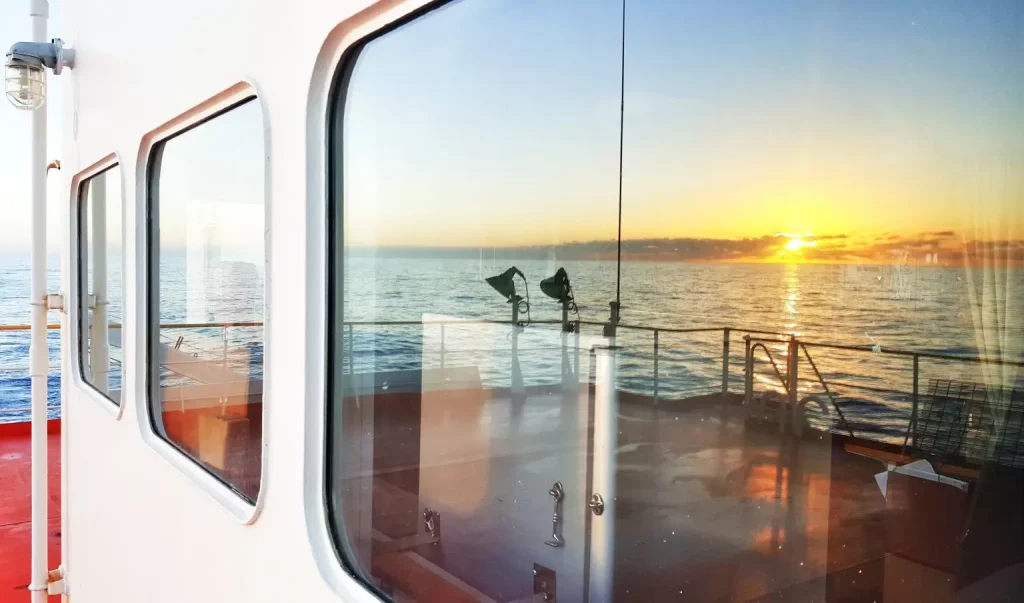
Marine Wood Protection Against Harsh Sea Conditions
Protection of boat decks is something challenging for boat owners. Besides decks, many other wooden surfaces need to be protected. Nasiol DeckCoat Marine ensures marine wood protection; nano coating for marine wood protection is best for producing water repellent surfaces on the wood. After the deck coat application, the wood perfectly resists” stagnant water and humidity. The precise technique to execute for protecting your boat against pollutants is to apply a Deck coat in advance.
DeckCoat Marine-how does it work?
It contains an ultra-modern scientific formula precisely designed for wooden surfaces. The woody parts of marine are prone to damage due to harmful sun rays and salt water. The oleo-phobic and hydrophobic features wrestle well with all kinds of stains.
Features of DeckCoat Marine:
- User-friendly application
- Salt water resistant formula
- Maximum durability and long lasting anti-foul coating
- Very easy-to-clean properties
- Highly hydrophobic and oleophobic
- Environmentally responsible choice
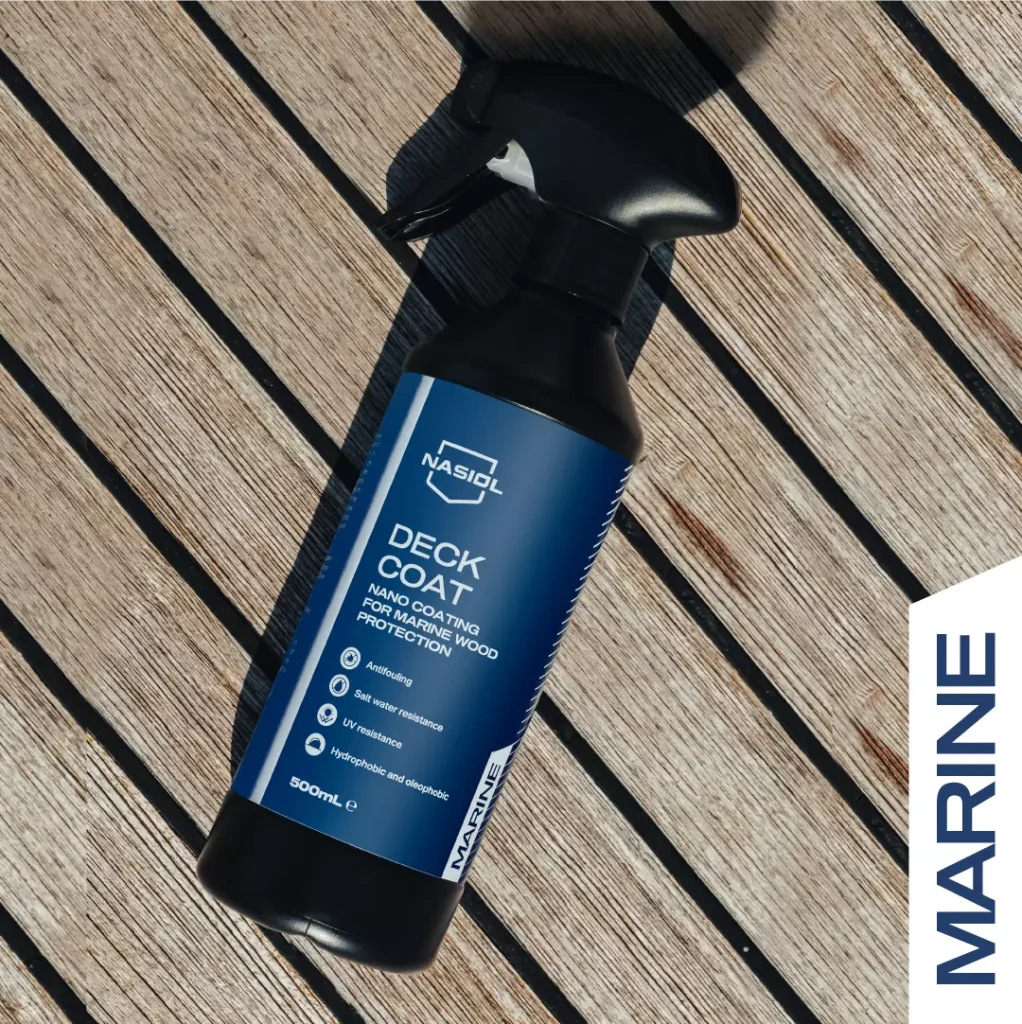
Marine Gelcoat Protection – Fence Fiberglass Boat
Protecting the gelcoat on fiberglass boats is crucial for maintaining their aesthetic appeal and structural integrity. Nasiol MarineCoat One is an effective nano ceramic coating for the gel coat of sea vehicles and other plastic parts. It creates a fence against acid rains, dings, harsh detergents, UV irradiation, and many other toxic chemicals. It would be wise not to use harsh chemicals on your boat; the marine gel coat protective layer creates a more substantial barrier to keep the toxins at bay.
MarineCoat One-How Does it Work?
MarineCoat One revitalizes the natural look of your marine. The touch of this coat turns your dull and drab surface into an appealing one. It has a remarkable ability to provide endurance and resilience against salt water and other seaside effects; thus it maintains deep reflective gloss finish of your boat.
Features of MarineCoat One:
- Matchless gloss effect
- High chemical and UV resistance
- Very easy-to-clean properties
- Provides antifouling features
- Protects the original color of the vehicle
How long does marine coating last?
Marine coatings provide robust fencing in the form of layers for sea vehicles. The seaside has dreadful sea irritants that ruin the interior and exterior of marines and yachts.The longevity of marine coatings, including ceramic coatings and gelcoat protectants, varies based on several factors such as the type of coating, application quality, environmental conditions, and maintenance practices.
Here’s the some tips to maximizing the lifespan of marine coatings;
Regular Maintenance: Keep the boat clean by washing it regularly with fresh water to remove salt and contaminants.
Gentle Cleaning Products: Use cleaning products that are compatible with the coating to avoid stripping away the protective layer.
Avoid Abrasive Methods: Refrain from using abrasive cleaning tools or harsh chemicals that could damage the coating.
Proper Storage: Store the boat under cover or use protective covers when not in use to shield it from UV rays and environmental contaminants.
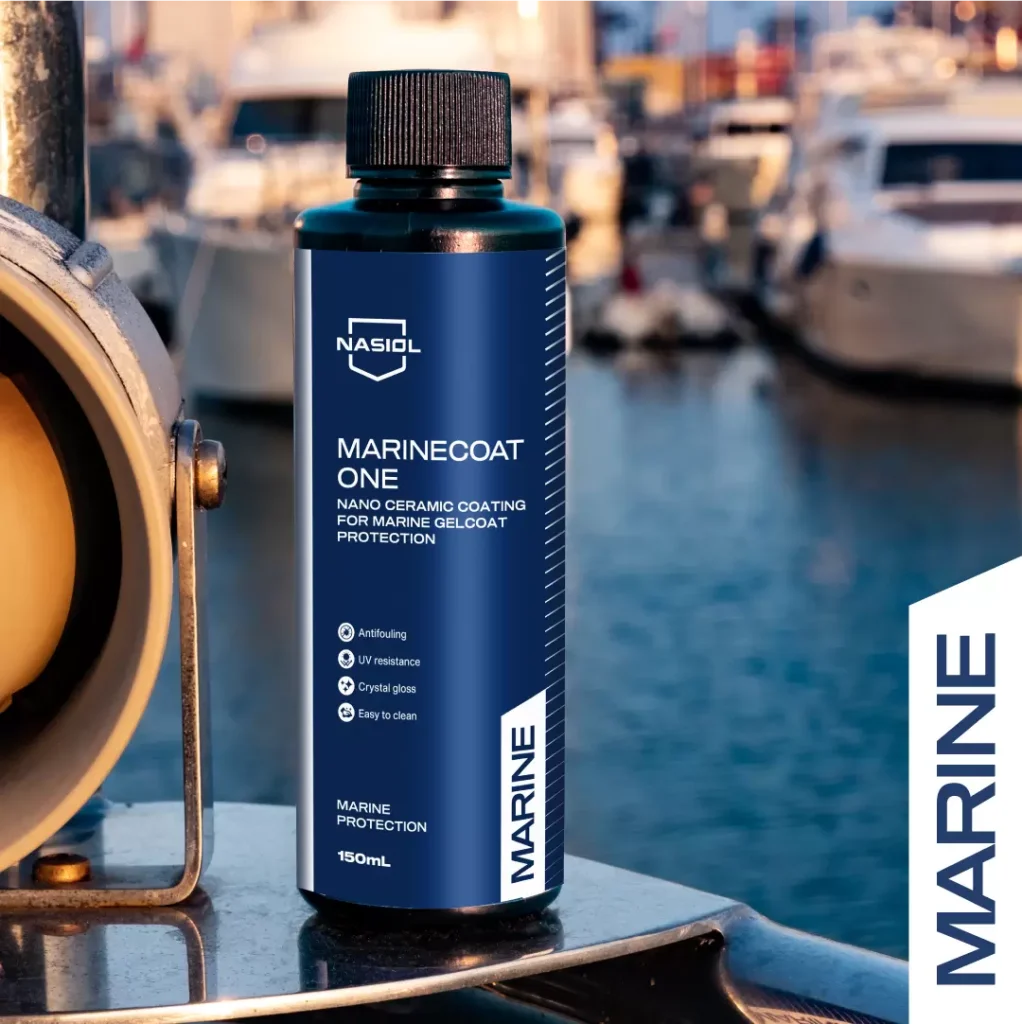
Final words:
Ceramic coating is essential for preserving the condition of boats, yachts, and other marine vessels. It represents a valuable investment with significant returns. Numerous marine coatings are designed for specific parts of sea vehicles, helping to restore their shine and improve their performance. These coatings offer excellent features and are easy to apply.
FAQ:
How to maintain marine ceramic coating?
Rinsing your marine regularly is crucial for its maintenance. Use clean water. Don’t use severe chemicals on it. Try applying a maintenance coat once every six months.
What is the difference between marine ceramic coating and wax?
Ceramic coatings are a hundred times more effective and long-lasting than wax coatings. The ceramic coating offers long-lasting effects, whereas the wax coat has short-term effects. The Ceramic coating bonds well with the surface; on the other hand, the wax coat doesn’t sit well.
How long do ceramic coatings last on boats?
The longevity of ceramic coatings on boats can vary depending on several factors, including the quality of the coating, the application process, and the environmental conditions to which the boat is exposed. However, generally marine ceramic coatings typically last up to 2 seasons.
Is marine ceramic coating suitable for hot weather?
While marine ceramic coatings are suitable for hot weather, the application process should ideally be carried out in a controlled environment. Extremely high temperatures during application can affect the curing process, so it’s best to apply the coating in the morning or late afternoon when temperatures are cooler, or in a shaded area or indoor facility if possible.
